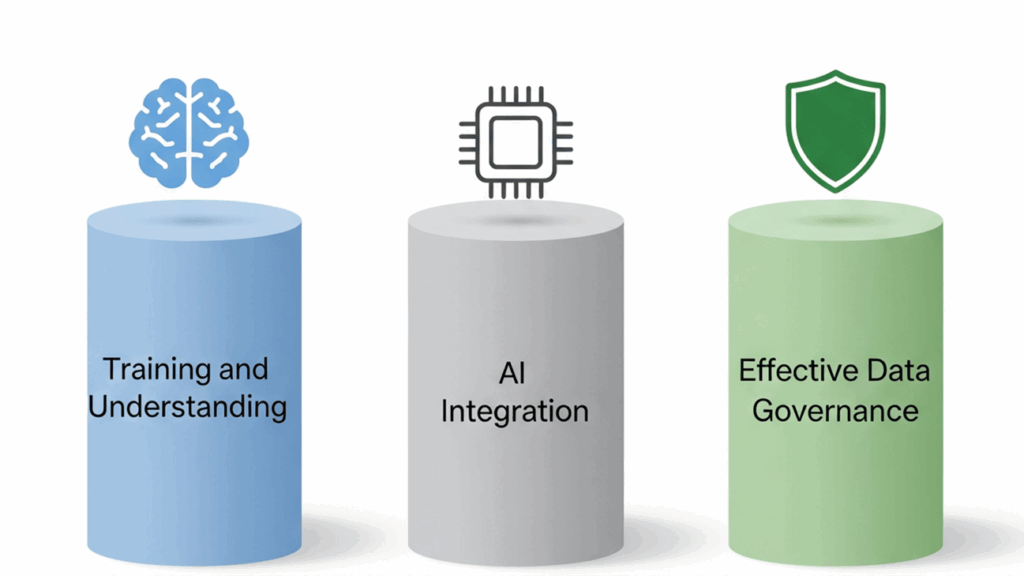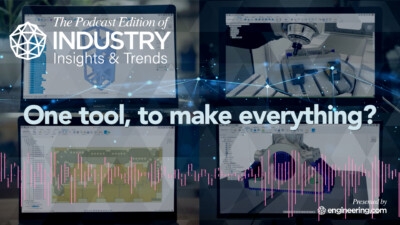The hidden life of data clutter in half-forgotten digital closets is coming to an end.
The torrent of data and information flowing through organizations is relentless. Onward in variety, outward in reach and spread, and upward in quantity—all at higher velocity. All organizations have petabytes of data in countless forms and formats flowing ceaselessly into and through a complex ecosystem of applications, systems, and platforms.
A comprehensive new vision for this is emerging: the Data Landscape, a graphical ecosystem built with or extracted from all of the enterprise’s databases with state-of-the-art data mapping tools and solutions.
These tools and solutions can unlock, gather, track, manage, analyze, and use anything and everything digital in the enterprise, regardless of size and structure. And anything else, too, for that matter, such as images, text files, videos, CAD files, CAM toolpaths, analyses of many kinds, inspection specifics, and so on.
The best of these tools can access virtually all of the enterprise’s data and metadata, even if it is buried in obsolete legacy formats and systems, or stashed in the “silos” maintained by nearly every department and business unit.
In short, the hidden life of data clutter in half-forgotten digital closets is coming to an end as it is gathered and mapped into Data Landscapes. What this can potentially do for your enterprise’s product development and product lifecycle management activities is significant, although it won’t be as easy as a finger snap.
I am always cautious about using the term “revolution,” but for now, it is the best description for what is happening in the world of data, information, and knowledge. We at CIMdata now see that Data Landscape mapping tools and solutions offer exponentially better ways for managing, securing, searching, finding, accessing, as well as extracting value out of the extended enterprise’s mountain of data.
Fortunately, these Data Landscape tools and solutions are rapidly becoming more effective and less difficult to use. And they foreshadow major implications for product lifecycle management (PLM) activities from concept through life, by:
- Enabling an organization’s digital threads to bring more data into the digital twins to which they are connected.
- Supporting more comprehensive and more detailed digital twins.
- Extending end-to-end lifecycle connectivity to the entire Data Landscape of the extended enterprise, not just product lifecycles.
These new Data Landscape tools are also beginning to upend time-tested processes for developing bills of materials (BOMs), which are the roadmaps of every new product’s creation, development, production, and service. Soon BOMs will be extended “back” to ideation and what I like to call “the voice of the customer” and forward through field service and on to recycling, remanufacturing, repurposing, or disposal.
There are also major product-development implications in Data Landscape mapping for digital transformation, as we now see that so much more has to be transformed and made usable from the earliest stages of the product lifecycle.
The very name “Data Landscape” points us towards a new approach to mapping, one that far exceeds the traditional conceptual, logical, and physical models that we use to align data with business strategies and goals. Mapping in this new form must cover all of the extended enterprise’s data and its sources, transformations, and destinations … profiling and cataloguing a digital graphical geography of data, applications, tools, systems, and so on.
Without Data Landscape mapping, most of the enterprise’s data remains inaccessible and otherwise useless, denying the enterprise the opportunity for more informed decisions, comprehensive analyses, and competitive products and services.
Defining the data landscape
What is in a Data Landscape? Anything and everything digital, structured or unstructured, formatted data, raw data, and anything in between. Data Landscapes contain sources, transformations, models, transactional databases, analyses (and analytical tools), programming languages, and everything else that anyone has saved. It’s far easier to say what’s not in a Data Landscape: in theory, nothing.
Unlocking new value
Data Landscapes are coming into focus as being capable of creating significant new value in product lifecycle management activities. Thanks to mapping and digital transformation, the possibilities include vastly expanded analyses for more profound product insights; savvier and speedier decision-making about products, features, and capabilities; better and higher quality production; and better end-to-end lifecycle support.
And all of this is constantly evolving, growing, and undergoing change, with updates, transformations, and sometimes even replacement—a powerful justification for implementing effective and ongoing data governance, as well as for frequent remapping.
For everyday use, these tools must be integrated with the enterprises’ dozens of technology stacks, which are used to create, collect, model, transform, store, and analyze data and information for specific purposes or business processes. The fact that the term “Data Landscape” itself is gaining attention shows that these tools work.
Dozens of tools for various mapping processes can be downloaded from solution providers in the Data Landscape marketplace—IBM and Microsoft, of course, as well as Orion Governance, FanRuan Software, Hyve Solutions, AtScale, Zendata, and many others.
In terms of PLM, what tools are we talking about?
In terms of PLM activities, however, what we connect Data Landscape mapping tools to is highly important. Aside from PLM and the toolsets in use for digital transformation, this means whatever is used to generate BOMs (with or without ERP), manufacturing execution systems (MES), purchasing (including interfaces to component suppliers, contractors, and partners), supply chain maintenance, and service oriented solutions (e.g., those focused on maintenance, repair, and overhaul.)
These connections foreshadow many alterations (and even a few upheavals) in the established processes of developing new products. As with any new technology, users and managers inevitably have to address some tough challenges, such as how to:
- Choose which of the many mapping tools to implement
- Connect and integrate those tools
- Use them effectively
- Evaluate those tools’ outputs, whether graphical or in some other form
- Integrate these new tools’ outputs with the enterprise’s data already in use throughout the product lifecycle, both upstream and downstream.
The three pillars of a successful data landscape

To ensure that a Data Landscape and its mapping tools enhance PLM activities, three essential elements must be in place:
• Training so that users understand the Data Landscape and its many subsystems and components, their uses, and their differences. Data Landscape websites list data warehouses, lakes and lakehouses, platforms, meshes, stacks, marts, and even swamps. A Data Landscape can be seen as the ultimate representation of data throughout the connected environment of an Internet of Things.
• Adoption and use of artificial intelligence (AI), which is now part of everything digital, including Data Landscape mapping tools and systems—especially those using the enterprise’s Data Stacks. A well-mapped Data Landscape can be seen as the ultimate Large Language Model (LLM) to use with AI. The enormous amount and variety of digital data (and computer clutter) make it essential to know how to find and fix AI’s errors and its occasional hallucinations.
• Data governance, which is essential for any worthwhile use of Data Landscapes. Data governance policies, standards, rules, and their supervision—always do the same few vital things. Amid complexity and constant, rapid change, data governance ensures security, quality, and integrity of data access and use. Data governance is crucial for avoiding failures in regulatory compliance, that come with the risk of often hefty fines and reputational damage that may take years to overcome.
Impacts of data landscape tools on PLM
As we observed at the outset, the maturation of digital tools to work with virtually all of the enterprise’s data presents, what might be, a once-in-a-generation opportunity to create more complete and more accurate BOMs and use them to overhaul the entire product lifecycle.
In effect, we will be gaining useful and reliable access to virtually all of the enterprise’s data and information, no matter what it is or where it is.
This is why we see that the new and improved Data Landscape mapping tools and solutions offer exponentially better ways of searching, finding, and accessing whatever is needed from the extended enterprise’s data, even if not actually using most of it. PLM processes will never be the same.



